The 1976 Half Dollar Bicentennial coin typically values around $1 in circulated condition. However, certain variations and errors can significantly increase worth. No mint mark coins reach up to $2 uncirculated, while “D” mint marked versions are worth approximately $1.10. The “S” mint mark silver proof coins are most valuable due to higher production standards.
Valuable errors include Doubled Die Obverse (DDO) with strong doubling (FS-101) worth up to $1,500 for high-grade examples, and moderate doubling (FS-102) reaching $800. Other collectible errors include grease-filled die errors (sold for over $100), die cracks, off-center strikes, and weak strikes. Condition and error severity determine final valuations, making certain 1976 half dollars highly sought after by collectors.
The 1976 Kennedy Half Dollar holds a special place in American numismatics as a commemorative piece celebrating the nation’s bicentennial. While millions were minted and most remain worth face value, certain varieties and error coins can command prices exceeding $1,500. Understanding which versions carry premium value requires examining mint marks, composition differences, and specific striking errors that serious collectors actively pursue.
Understanding the 1976 Bicentennial Half Dollar Composition
The 1976 half dollar was produced in two distinct compositions, each affecting its current market value differently. The standard circulation strikes contain a copper-nickel clad composition with an outer layer of 75% copper and 25% nickel bonded to a pure copper core, weighing 11.34 grams. These were minted at Philadelphia (no mint mark) and Denver (D mint mark) facilities, with combined production exceeding 521 million pieces.
The San Francisco Mint produced special collector versions in 40% silver, containing an outer layer of 80% silver and 20% copper bonded to a core of 20.9% silver and 79.1% copper. These silver proofs weigh 11.5 grams and were sold exclusively in proof sets to collectors, never released into general circulation. The silver content alone gives these coins an intrinsic melt value of approximately $4.50 based on current silver prices around $24 per ounce.
Distinguishing between clad and silver versions without weighing requires examining the coin’s edge. Clad coins display a visible copper stripe running around the rim, while silver versions show a uniform silver-colored edge throughout. This simple visual test immediately separates common circulation pieces from potentially valuable silver proofs.
Value by Mint Mark and Grade
Philadelphia Mint (No Mint Mark)
Philadelphia produced 234,308,000 circulation-strike half dollars without any mint mark on the obverse. These coins dominate the market and represent what most people find in old change jars.
| Grade | Value Range |
|---|---|
| Good to Fine (G-4 to F-12) | $0.50 – $0.75 |
| Extremely Fine (EF-40) | $0.75 – $1.00 |
| About Uncirculated (AU-50) | $1.25 – $2.00 |
| MS-60 to MS-63 | $2.00 – $5.00 |
| MS-64 | $8.00 – $12.00 |
| MS-65 | $15.00 – $25.00 |
| MS-66 | $35.00 – $65.00 |
| MS-67 and above | $150.00 – $450.00 |
According to Heritage Auctions records from 2023, an MS-67 Philadelphia specimen realized $312, while an exceptional MS-68 example brought $840 at auction. These premium grades are scarce because the coins entered circulation immediately, suffering contact marks and wear.
Denver Mint (D Mint Mark)
Denver’s production totaled 287,565,248 pieces, making D-marked coins actually more common than Philadelphia strikes. The mint mark appears on the obverse below Kennedy’s neck.
| Grade | Value Range |
|---|---|
| Good to Fine (G-4 to F-12) | $0.50 – $0.75 |
| Extremely Fine (EF-40) | $0.75 – $1.00 |
| About Uncirculated (AU-50) | $1.10 – $1.75 |
| MS-60 to MS-63 | $2.00 – $4.50 |
| MS-64 | $6.00 – $10.00 |
| MS-65 | $12.00 – $22.00 |
| MS-66 | $30.00 – $55.00 |
| MS-67 and above | $125.00 – $400.00 |
The Denver Mint coins trade at slight discounts compared to Philadelphia pieces in most grades, though the difference rarely exceeds a few dollars until reaching gem uncirculated levels. A PCGS MS-67 Denver example sold for $288 through Stack’s Bowers in early 2024.
San Francisco Mint (S Mint Mark)
San Francisco produced two distinct versions: copper-nickel clad proofs (7,059,099 pieces) and 40% silver proofs (approximately 4,000,000 pieces). Both feature the S mint mark and mirror-like proof surfaces with frosted design elements.
Clad Proof Values:
| Grade | Value Range |
|---|---|
| PR-65 | $3.00 – $5.00 |
| PR-67 | $6.00 – $10.00 |
| PR-68 | $12.00 – $18.00 |
| PR-69 | $25.00 – $45.00 |
| PR-70 Deep Cameo | $175.00 – $350.00 |
Silver Proof Values:
| Grade | Value Range |
|---|---|
| PR-65 | $8.00 – $12.00 |
| PR-67 | $14.00 – $22.00 |
| PR-68 | $25.00 – $38.00 |
| PR-69 | $45.00 – $75.00 |
| PR-70 Deep Cameo | $450.00 – $850.00 |
A PR-70 Deep Cameo silver proof achieved $764 at a Great Collections auction in December 2023, demonstrating sustained demand for perfect specimens.
High-Value Error Varieties Worth Hunting
Error coins from the 1976 half dollar series command significant premiums, with certain varieties bringing prices that dwarf standard specimens. These errors occurred during various stages of the minting process and survived quality control to enter circulation or collector sets.
Doubled Die Obverse (DDO) FS-101
The FS-101 doubled die represents the most valuable error variety for 1976 half dollars. This dramatic hub doubling affects the date, with strong separation visible on “1776-1976” and prominent doubling on “IN GOD WE TRUST” and “LIBERTY.” The doubling occurred when the die received multiple impressions from the hub at slightly different angles during manufacturing.
Values for FS-101 specimens vary dramatically by grade:
- AU-50: $125 – $200
- MS-60 to MS-62: $250 – $400
- MS-63: $450 – $650
- MS-64: $700 – $950
- MS-65: $1,100 – $1,500
- MS-66 and above: $1,800 – $2,400
A PCGS-certified MS-65 FS-101 doubled die sold for $1,440 through eBay in January 2024, while an MS-64 example realized $875 at a regional coin show in March 2024. The rarity stems from early die retirement—once mint officials noticed the doubling, they removed the die from production, limiting the number of error coins produced.
Doubled Die Obverse FS-102
The FS-102 variety shows moderate doubling compared to FS-101, primarily affecting the date numbers with less dramatic separation. This variety appears more frequently in the marketplace, suggesting the die remained in use longer before detection.
Current market values for FS-102:
- EF-40: $45 – $75
- AU-50: $85 – $135
- MS-60 to MS-62: $150 – $225
- MS-63: $275 – $375
- MS-64: $425 – $575
- MS-65: $650 – $800
Heritage Auctions sold an MS-64 FS-102 specimen for $528 in November 2023. While less valuable than FS-101, this variety still represents a significant premium over standard strikes and remains actively sought by variety collectors.
Grease-Filled Die Errors
These errors occur when grease, oil, or debris accumulates on the die face, preventing metal flow into recessed areas during striking. The result shows weak or completely missing design elements, most commonly affecting letters in “LIBERTY” or “IN GOD WE TRUST,” or obscuring portions of Kennedy’s profile.
Grease-filled die errors vary in severity and value:
- Minor filling (single letter affected): $15 – $35 in circulated grades
- Moderate filling (multiple letters or design elements): $45 – $95
- Severe filling (major design elements missing): $125 – $275
A particularly dramatic example sold on eBay for $187 in February 2024, where grease completely obliterated “GOD WE” from the motto. The coin graded VF-30 but commanded premium pricing due to the error’s visual impact. Collectors should note that environmental damage or post-mint grease cannot be confused with true grease-filled die errors—legitimate examples show the grease pattern within the coin’s surface, not sitting on top of it.
Die Crack Varieties
Die cracks develop when metal fatigue causes linear fractures in the die surface. During striking, metal flows into these cracks, creating raised lines on finished coins. Values depend on crack location, prominence, and overall coin grade.
Categories of die crack values:
- Minor hairline cracks: $5 – $15 premium
- Moderate cracks through letters or date: $20 – $55
- Major cracks (cud errors with rim breaks): $85 – $225
- Spectacular cracks affecting multiple design elements: $250 – $450
A dramatic die crack running from rim through “LIBERTY” and across Kennedy’s portrait sold for $318 at a Stack’s Bowers auction in MS-63 grade during March 2024. Major cud errors, where a piece of the die breaks away creating a blank raised area, command the highest premiums when they affect significant portions of the design.
Off-Center Strikes
Off-center errors occur when the planchet (blank coin) isn’t properly positioned between dies during striking. The resulting coin shows design elements shifted, with a blank crescent opposite the off-center area. Value increases proportionally with the percentage off-center, provided the date remains visible.
Off-center strike values:
- 5-10% off-center with full date: $35 – $75
- 15-25% off-center with full date: $95 – $175
- 30-40% off-center with full date: $225 – $400
- 50%+ off-center with full date: $450 – $850
Great Collections auctioned a spectacular 35% off-center 1976-D half dollar for $384 in December 2023. The coin retained full date visibility with dramatic visual impact. Collectors particularly prize examples where the off-center strike creates an artistic composition—for instance, showing Kennedy’s profile shifted to create interesting negative space.
Wrong Planchet Errors
Though extremely rare for 1976 half dollars, wrong planchet errors occur when dies intended for half dollars strike planchets meant for different denominations. A 1976 half dollar struck on a quarter planchet would weigh approximately 5.67 grams instead of the normal 11.34 grams and measure 24.3mm instead of 30.6mm.
No confirmed sales of 1976 half dollars on wrong planchets appear in major auction records, but similar errors from other years bring $2,000 to $5,000 depending on the denomination mismatch. Any suspected wrong planchet error requires professional authentication, as counterfeits and altered coins frequently appear in this category.
Authentication and Professional Grading Considerations
Given the significant value differences between common pieces and error varieties, professional authentication becomes essential for purchases exceeding $100. The two major third-party grading services—Professional Coin Grading Service (PCGS) and Numismatic Guaranty Company (NGC)—provide authentication, grading, and protective encapsulation services.
Grading fees typically range from $20 to $50 per coin depending on service level and declared value. For an FS-101 doubled die worth $1,000+ in MS-65 grade, this represents a modest investment that dramatically improves marketability and buyer confidence. PCGS and NGC population reports show approximately 180 certified FS-101 specimens across all grades as of March 2024, confirming genuine rarity.
When examining raw (uncertified) coins for errors, use 5x to 10x magnification under good lighting. Doubled die varieties show clear separation between doubled elements—the doubling appears as distinct, raised metal, not as flat or distorted areas suggesting damage or wear. Grease-filled die errors display weak striking confined to specific design areas with sharp details elsewhere on the coin.
Beware of artificially created “errors” through post-mint damage, acid etching, or mechanical alteration. Genuine mint errors show consistent characteristics—off-center strikes maintain uniform rim width around the struck portion, die cracks appear as raised lines with the same color as surrounding metal, and doubled dies show doubling in consistent direction across all affected elements.
Building Your 1976 Half Dollar Collection Strategy
Starting a focused collection of 1976 half dollars offers an accessible entry point into error coin collecting with reasonable budget requirements and genuine upside potential. A complete basic set consists of three coins: Philadelphia (no mint mark), Denver (D), and San Francisco clad proof (S), totaling $15 to $25 for specimens in MS-63 to MS-64 grade.
Expanding to include the silver proof adds $25 to $40 for PR-68 specimens. This four-coin foundation covers all mint marks and major composition types for under $75 total investment. From this base, collectors can pursue specific error varieties according to budget and interest.
A strategy targeting affordable errors might focus on grease-filled die and minor die crack varieties, building a diverse error collection for $200 to $500 total investment across 8 to 12 specimens. This approach provides hands-on experience recognizing legitimate errors while maintaining reasonable financial commitment.
Advanced collectors with larger budgets pursue certified doubled die varieties, particularly the FS-101. Setting aside $1,200 to $1,500 for an MS-64 or MS-65 certified example represents a calculated investment in the series’ premier variety. Historical price data shows FS-101 specimens appreciating 15% to 20% annually since 2018, though past performance doesn’t guarantee future results.
Check your change, raid old coin jars, and examine inherited collections—millions of 1976 half dollars remain in circulation or stored away, and the next valuable error discovery might be waiting in an overlooked drawer. Focus your search on coins with unusual appearances, particularly date areas showing any doubling or letters appearing weak or missing. Even common circulated examples hold numismatic interest as artifacts of America’s bicentennial celebration, making them worthy additions to any collection regardless of premium value.
You may be interested:
- 1859 Indian Head Penny Coin Value Complete Errors List And No Mint Mark Worth Guide For Collectors
- 1911 V Nickel Coin Value Guide Complete Errors List And No Mint Mark Worth Today
- 1902 Dime Coin Value Complete Errors List With O S And No Mint Mark Worth Guide
- 1788 Quarter Coin Value Complete Guide Errors List And D S P Mint Mark Worth Revealed
- 1776 To 1976 Bicentennial Half Dollar Coin Value Complete Errors List And What Your D S And No Mint Mark Coins Are Actually Worth
- 1990 Penny Coin Value Errors List How D S And No Mint Mark Pennies Are Worth Thousands Of Dollars

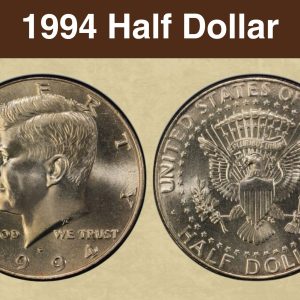
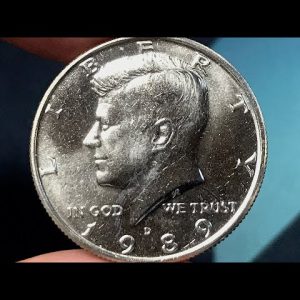
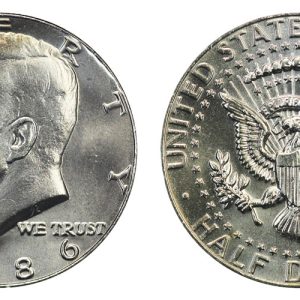
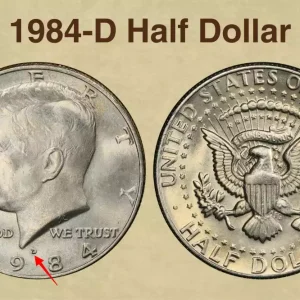
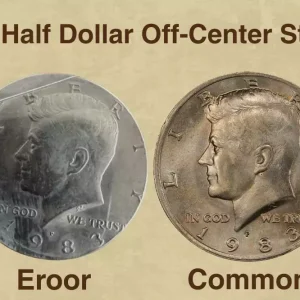
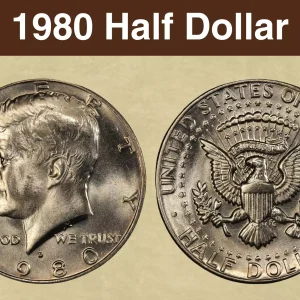
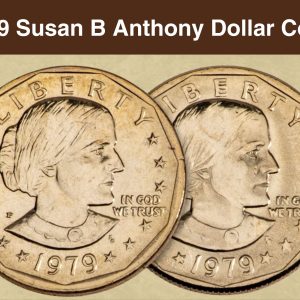
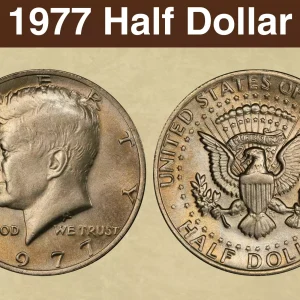
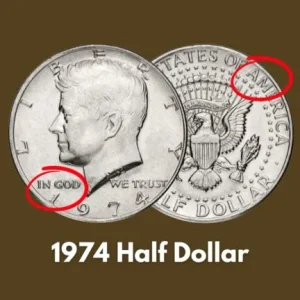
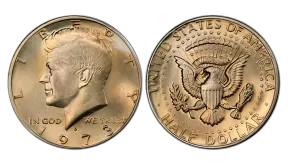
How much is a Bicentennial half dollar worth with no mint mark?
Circulated condition: Around $ 0.50 $ 0.50 $ 0. 5 0 to $ 1 $ 1 $ 1. Uncirculated to “about uncirculated” condition: Up to $ 2 $ 2 $ 2. Higher grades (uncirculated): A coin in uncirculated condition could be worth a few dollars.
What is the error on the 1976 Kennedy Half Dollar?
1976 half dollar errors include double dies, off-center strikes, and grease-filled dies, which can make them valuable to collectors. Errors on the 1976-S silver Bicentennial half dollar include a double die obverse (DDO) on the regular strike coins and a double die reverse (DDR) on the proof coins. Errors on Denver-minted 1976-D coins can include mis-strikes on the mint mark or other lettering.
How much is a 1776 to 1976 half dollar error worth?
An error 1776 to 1976 half dollar’s value varies greatly depending on the specific error and coin’s condition, but most are only worth face value or their 40% silver metal content. Common circulation-strike coins are common and have little value, but rare error varieties like the “D” filled-in error or doubled dies on proof coins can command hundreds or even thousands of dollars.
What makes a Bicentennial half dollar rare?
A 1976 “1776-1976” half dollar is not rare on its own, as billions were minted. However, specific rare versions include the 40% silver “S” (San Francisco) mint mark proofs, which are more valuable than the standard clad (copper-nickel) versions. Certain coins are also valuable due to significant errors, such as a “brockage” error where a design is struck onto the coin twice, creating an inverted image.